Islanders host 'Man Overboard!' discussion, rescue demonstrations
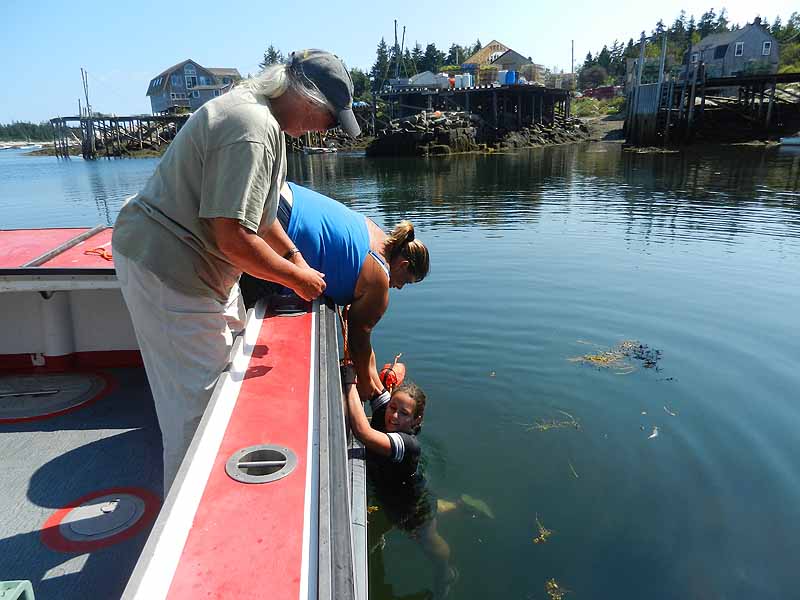 Volunteer Emily Murray is in the water, playing the victim, and lobster catcher Samantha Philbrook — who is a good deal taller than Emily and as strong as anybody — worked to pull her back aboard Robert Young's boat without Emily doing anything to help (simulating a very cold person.) (Photo by Eva Murray)
Volunteer Emily Murray is in the water, playing the victim, and lobster catcher Samantha Philbrook — who is a good deal taller than Emily and as strong as anybody — worked to pull her back aboard Robert Young's boat without Emily doing anything to help (simulating a very cold person.) (Photo by Eva Murray)
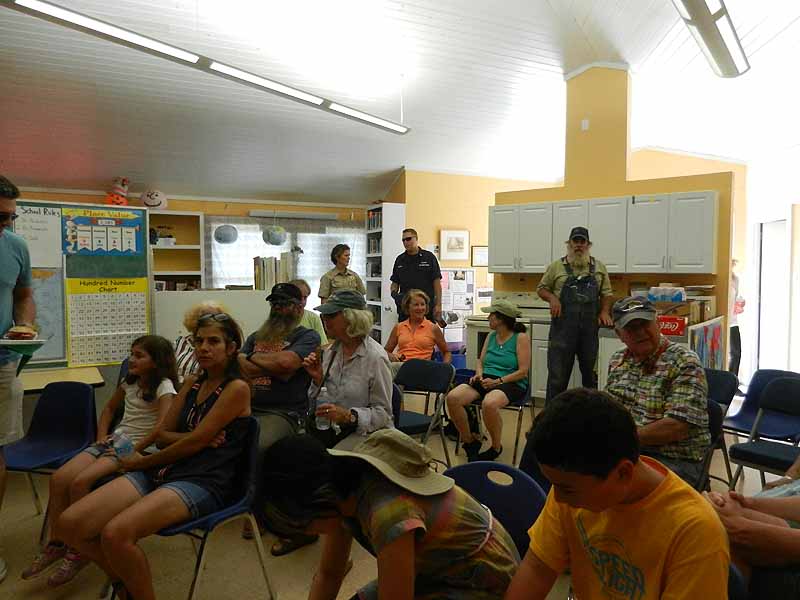 (Photo by Eva Murray)
(Photo by Eva Murray)
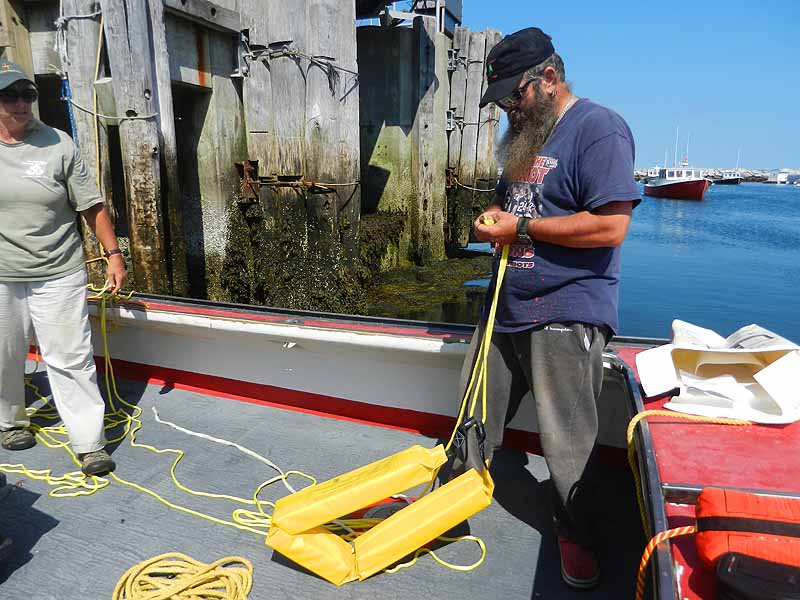 (Photo by Eva Murray)
(Photo by Eva Murray)
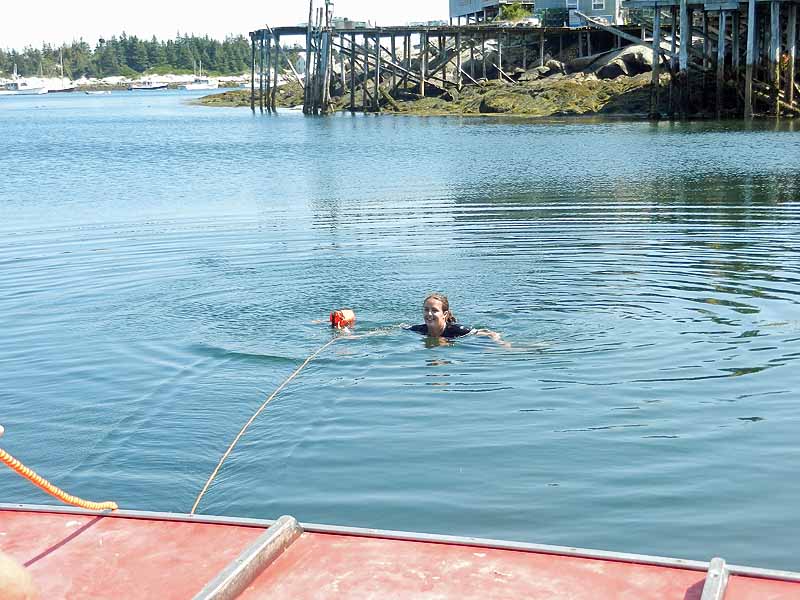 (Photo by Eva Murray)
(Photo by Eva Murray)
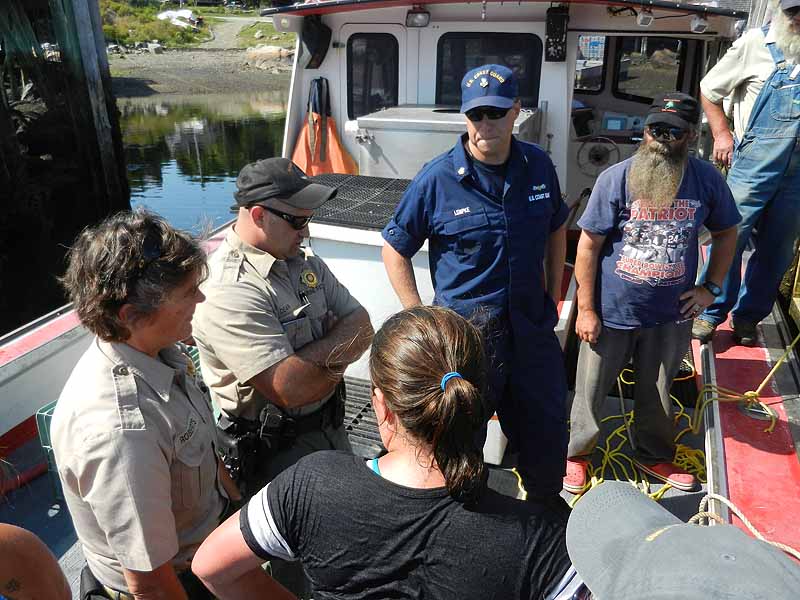 (Photo by Eva Murray)
(Photo by Eva Murray)
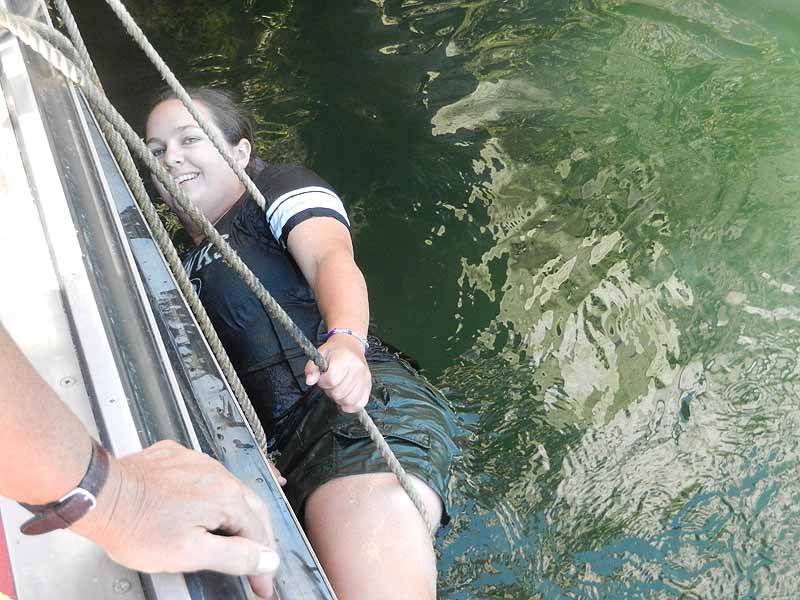 (Photo by Eva Murray)
(Photo by Eva Murray)
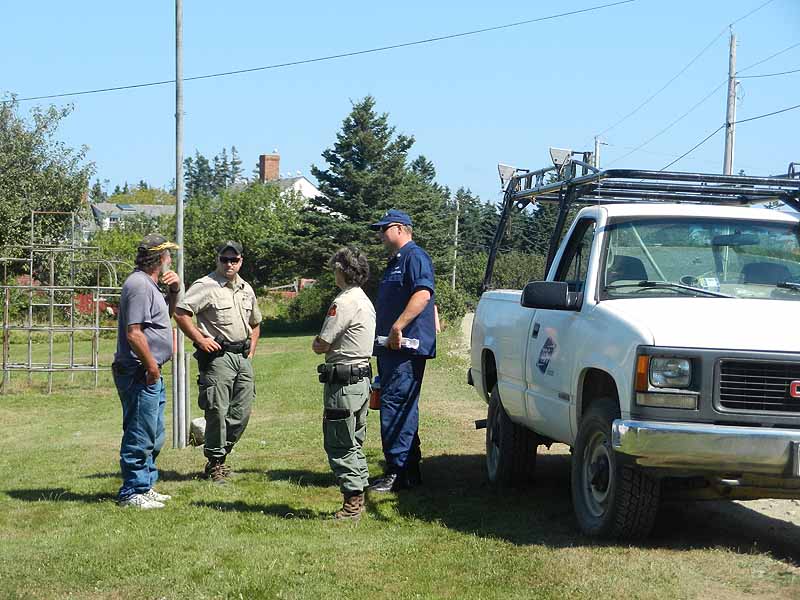 (Photo by Eva Murray)
(Photo by Eva Murray)
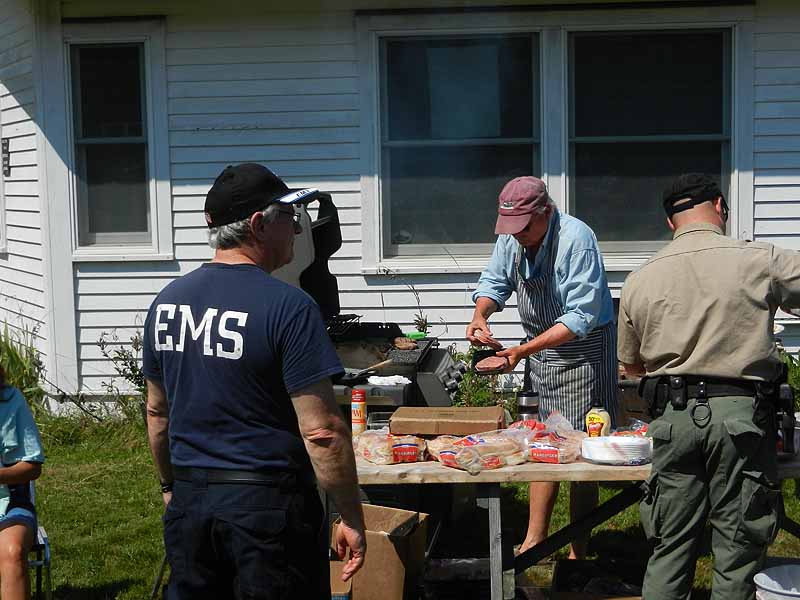 (Photo by Eva Murray)
(Photo by Eva Murray)
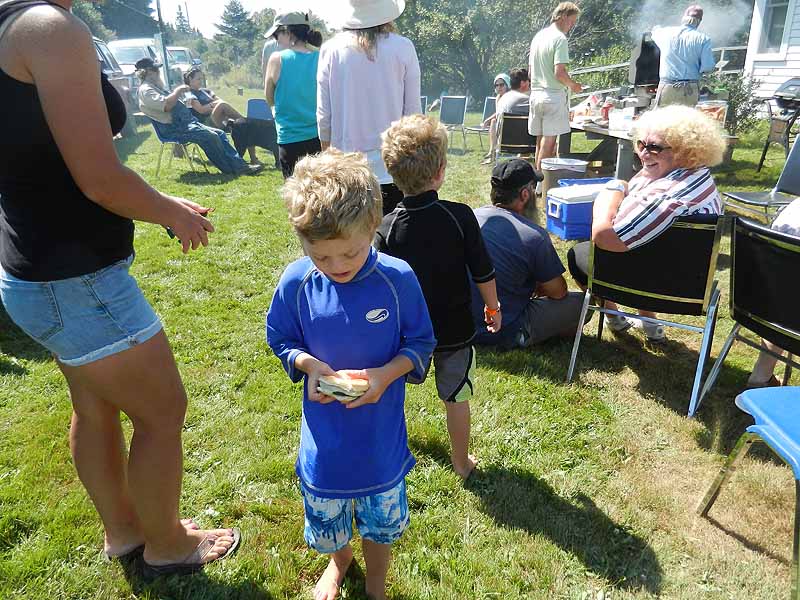 (Photo by Eva Murray)
(Photo by Eva Murray)
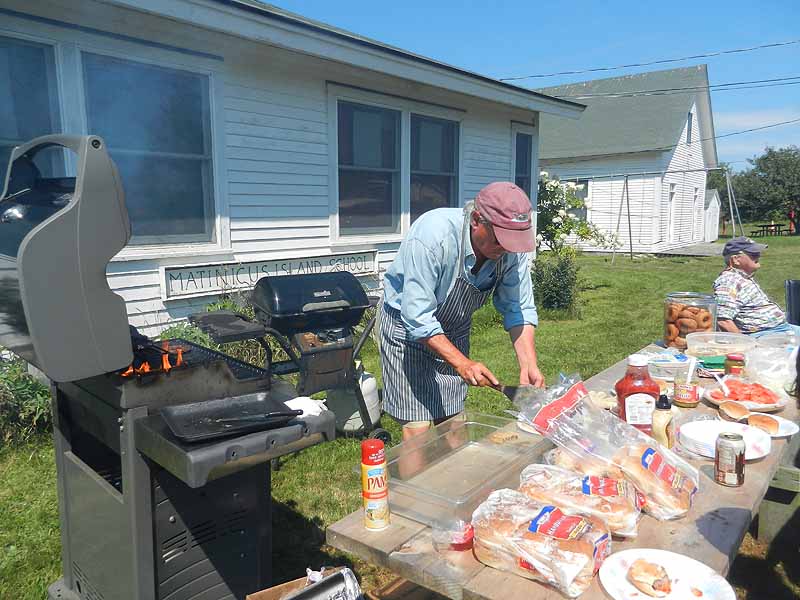 (Photo by Eva Murray)
(Photo by Eva Murray)
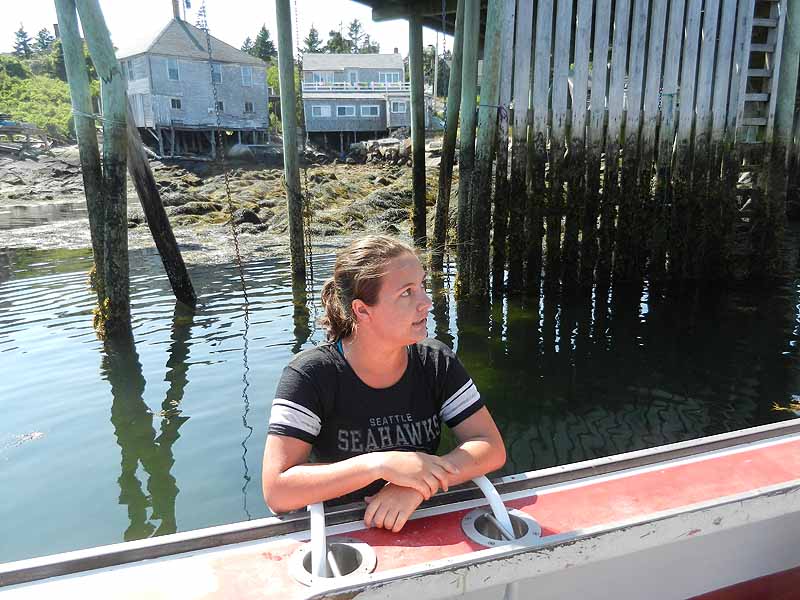 (Photo by Eva Murray)
(Photo by Eva Murray)
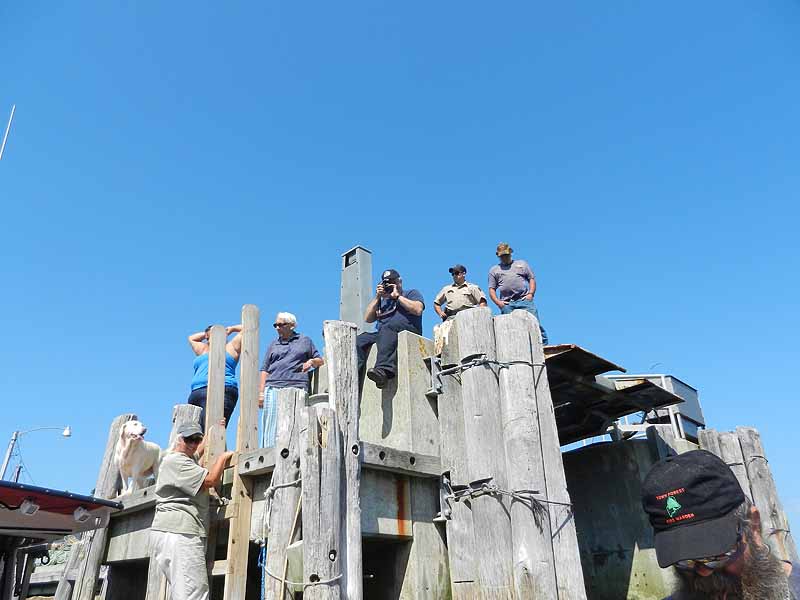 (Photo by Eva Murray)
(Photo by Eva Murray)
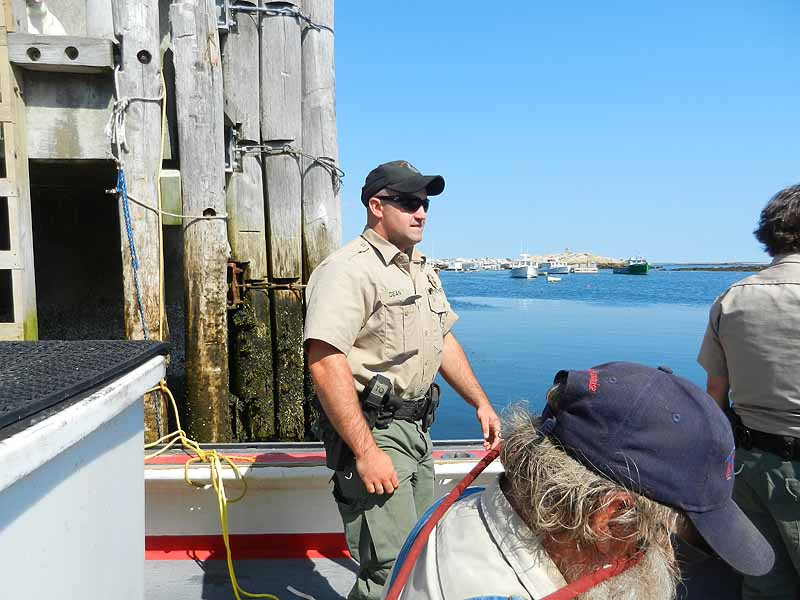 (Photo by Eva Murray)
(Photo by Eva Murray)
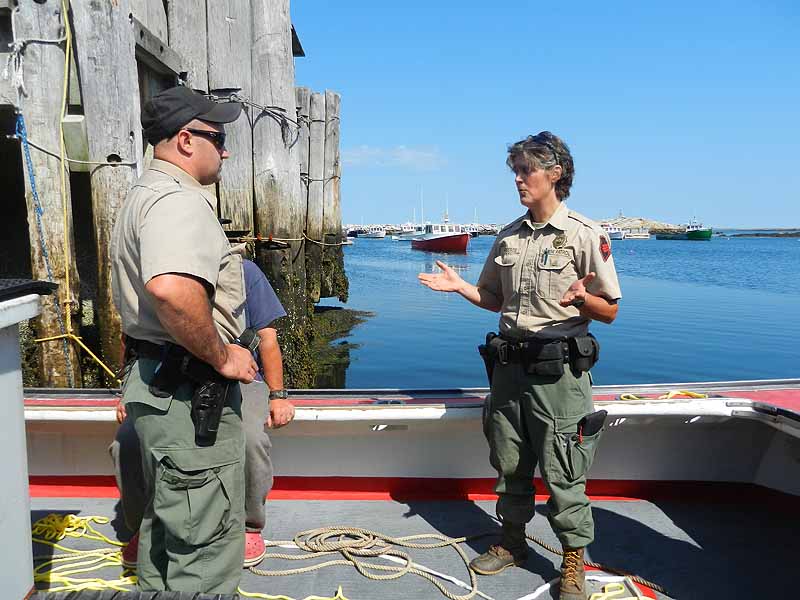 (Photo by Eva Murray)
(Photo by Eva Murray)
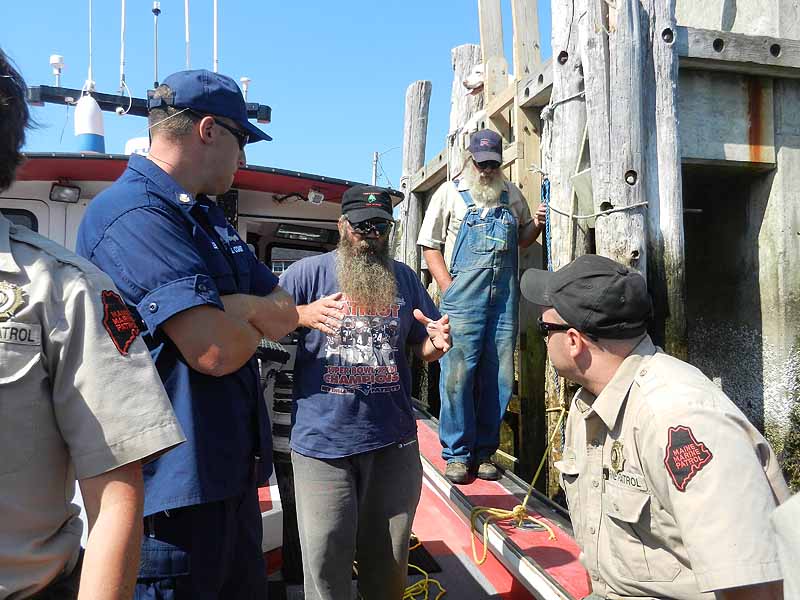 (Photo by Eva Murray)
(Photo by Eva Murray)
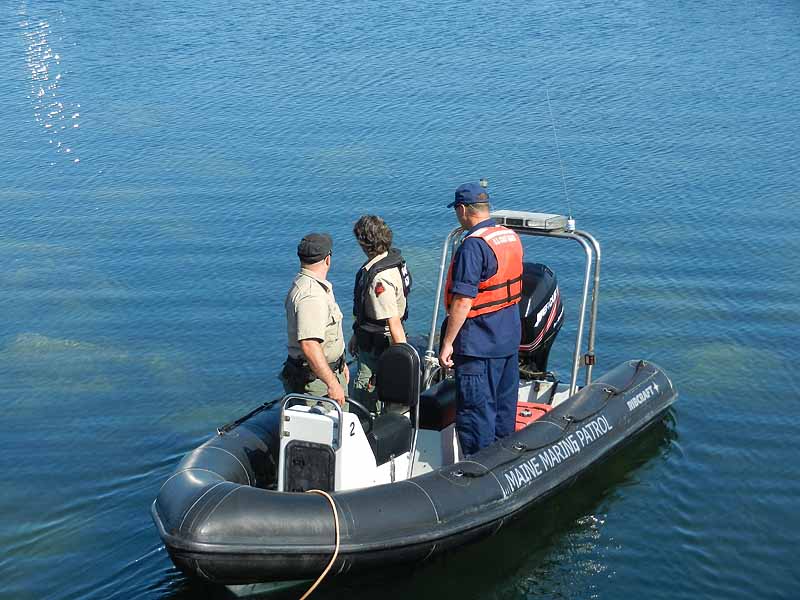 (Photo by Eva Murray)
(Photo by Eva Murray)
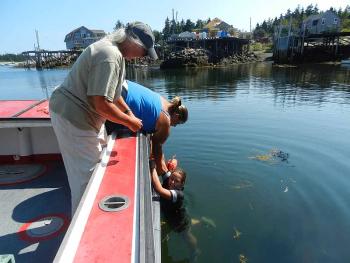 Volunteer Emily Murray is in the water, playing the victim, and lobster catcher Samantha Philbrook — who is a good deal taller than Emily and as strong as anybody — worked to pull her back aboard Robert Young's boat without Emily doing anything to help (simulating a very cold person.) (Photo by Eva Murray)
Volunteer Emily Murray is in the water, playing the victim, and lobster catcher Samantha Philbrook — who is a good deal taller than Emily and as strong as anybody — worked to pull her back aboard Robert Young's boat without Emily doing anything to help (simulating a very cold person.) (Photo by Eva Murray)
 (Photo by Eva Murray)
(Photo by Eva Murray)
 (Photo by Eva Murray)
(Photo by Eva Murray)
 (Photo by Eva Murray)
(Photo by Eva Murray)
 (Photo by Eva Murray)
(Photo by Eva Murray)
 (Photo by Eva Murray)
(Photo by Eva Murray)
 (Photo by Eva Murray)
(Photo by Eva Murray)
 (Photo by Eva Murray)
(Photo by Eva Murray)
 (Photo by Eva Murray)
(Photo by Eva Murray)
 (Photo by Eva Murray)
(Photo by Eva Murray)
 (Photo by Eva Murray)
(Photo by Eva Murray)
 (Photo by Eva Murray)
(Photo by Eva Murray)
 (Photo by Eva Murray)
(Photo by Eva Murray)
 (Photo by Eva Murray)
(Photo by Eva Murray)
 (Photo by Eva Murray)
(Photo by Eva Murray)
 (Photo by Eva Murray)
(Photo by Eva Murray)
MATINICUS — Residents of-and a few visitors to-Matinicus assembled Aug.24 outside the island's one-room elementary school, where Dave Sears was grilling hamburgers. In addition to some of the local lobstermen, a few kayakers and recreational boaters who happened to be vacationing here that week, as well as assorted homeowners who enjoy any occasion for a community gathering, we hosted Marine Patrol Officers Corrie Roberts and Wes Dean, Coast Guard First Petty Officer Adam Lempke of Station Rockland, and EMT Rick O'Malley from St. George Fire and Ambulance. The topic for a few serious hours would be "Man Overboard!"
Following the cookout and plenty of homemade cookies and doughnuts, we began by watching a few minutes of a video produced by the Canadian Safe Boating Council, which emphasized the facts about hypothermia and cold-water immersion. In the video, Dr. Gordon Giesbrecht (introduced as something like "The world's leading expert on freezing to death") took a group of volunteers, including Canadian Coast Guard members and other public safety and maritime professionals, through a Cold Water Boot Camp.
They, and we, learned how sudden immersion in near-freezing water impacts one's breathing, makes swimming very difficult well before real hypothermia begins, and how even a very able swimmer can become helplessly exhausted, and quickly (again, well before experiencing a state of true hypothermia, meaning that the temperature of the body's core begins to decrease).
Giesbrecht advised his students, and all cold-climate mariners, to remember "1-10-1." We have about 1 minute to get our breathing under control; we need to force ourselves to calm down and try to breathe properly and not to panic, keeping in mind that we really can get control of our gasping and gulping of air with a bit of time and mental determination. In water approaching freezing most people have roughly 10 minutes of "meaningful movement" before the extremities get too cold, tired and stiff to work. So, if there is a need to get to a knife and cut a rope, or swim, or use a radio, or shoot a flare, or put on a life jacket (not an easy task in the water, by the way!) these things must be accomplished within 10 minutes, while there is still some dexterity. Finally, in very cold water the average person has about 1 hour before they start to become truly hypothermic; however long it takes, they will eventually lose consciousness. At that point only a flotation device of some sort can save an individual from drowning, as it's all about keeping the airway above the surface.
Following the video, O'Malley, our guest EMT, offered some comments, including information about the stages of hypothermia. He described how a person in severe hypothermia — and this would be someone unresponsive and beyond all shivering — is a delicate patient, requiring gentle handling.
Members of the audience were encouraged to share their observations, as many in the room had some sort of first-hand experience with cold water immersion, marine search and rescue, or assisting a person who has gone over the side of a boat. Lobsterman Jeremy Van Dyne described being aboard an offshore fishing vessel as a 19-year-old when the boat caught fire in the middle of the night. Lobsterman Dan Lewis reminded everyone that he had lost both his father and his stepson in the way that most islanders fear the most: a man hauling alone disappears overboard, and nobody knows why. The younger man, Christopher Whittaker, was lost in October 2008, after other fisherman saw objects from his boat floating on the water. Neither Chris nor his boat was ever found.
With a terrible irony, several islanders were unable to attend our meeting because they were on Vinalhaven attending the funeral for lobsterman Jeremy Philbrook, who drowned from his boat Aug. 13.
Some of the shared experiences made for happier stories as they involved successful rescues. In July of 2011 a small airplane carrying three passengers and the pilot went down in Penobscot Bay, and every Matinicus boat owner or crewmember who got word of the crash in time set out to help. We (yes "we," as I was aboard that aircraft,) were taken aboard Clayton Philbrook's and Robert Young's boats, although as I have repeated before, the rescuers of note could have been anybody: the line of boats coming to our rescue, as we clung to a floating piece of fiberglass freight pod, looked for the world like one of Maine's famous lobster boat races.
Following this incident, Young told the group, he purchased several articles of emergency equipment for his boat. These included a padded life sling, with which a person could be hoisted out of the water using the hauling gear, and a lightweight, removable swim ladder, which would help a person still able to move get out of the water. Climbing aboard a lobster boat — and pulling somebody into a boat — are both surprisingly difficult, especially if that person's hands are nearly useless from the cold or if below-freezing temperatures make everything icy and slippery.
Back in 1992, Matinicus islanders were also called upon to rescue mariners in danger when the construction company tug Harkness sank on a below-zero January night in 40-knot winds. The tug sank near Zephyr Ledge, northeast of the island. One of the men aboard the wooden lobster boat Jan-Ellen, who set out from the island on that bitter night, spoke briefly about the experience. As with the airplane ditching in 2011, it took more than one happy detail to make the accident survivable. In fact, it took more than two or three. In both cases, a long list of things had to go just right, and somehow they did. Chief among them, however, was the reality that Maine's commercial fishermen, and islanders of any occupation, all understand themselves to be potential searchers, first-responders and rescuers. They know they may have to be, as all too often the professionals are too far away.
Of course we talked about PFDs, or life jackets, although this did not seem the place or the time to lecture commercial fishermen about wearing a life jacket. While the "big fat orange" PFDs aren't intended for work, there are some styles with a much smaller profile, and those who work at sea alone might want to give the subject some thought. Lempke reminded the group that the CO2—cartridge type life vests, which inflate in the water, must get regular inspection and maintenance to be reliable. I know of at least a couple of fishermen in this area who do wear PFDs when they go out to haul.
We also talked about throw rope bags. Over the past couple of summers, Matinicus Island Rescue has been giving out throw bags to any local boat owner who wants one, asking only that the captain remember to keep it in an obvious place — mounted somewhere, or on the bulkhead near the controls — and not to toss it "down forward" where it would be hopelessly buried under other gear and sure to be forgotten. The cost for these devices is borne by donations to the rescue service. Many people find that throw rope bags are easier to use than rigid life rings. No matter what sort of emergency flotation you keep on board, when the time comes, it helps enormously if you have practiced with it.
Another simple safety tool for anybody working aboard a fishing boat is a knife, either on their person, mounted somewhere within reach, or both. It seems that most scary dunkings, unwanted cold-water swims, and of course drownings around here are as a result of rope entanglement.
Next, an EMT from Matinicus Island Rescue who is also an American Heart Association CPR instructor (that would be me) offered a quick, noisy, no-frills demonstration of how to perform cardiopulmonary resuscitation.
CPR is the best thing to do for a person who is unresponsive and not breathing. If a mariner pulls somebody out of the water who appears to have drowned but is not absolutely, positively deceased, CPR is what they need to have any chance at all. People usually ask, "But how do you get the water out of the victim's lungs first? Don't you need to do that before you can breathe for them?" In short, no, you can't — and you may not have to. Recall that lungs are not like containers; they're more like sponges. You can't pour the water out, but you may be able to push air in. Also, a fair number of drownings are a result of a spasm in the airway, a circumstance where there may not be much water in the lungs at all. Just try CPR. It makes a lot of sense for anybody working on the water to take a CPR class.
Finally, some of the group adjourned to the wharf at Matinicus Harbor for a bit of demonstration and practice. Volunteer Emily Murray went into the water to play the victim, and lobster catcher Samantha Philbrook — who is a good deal taller than Emily and as strong as anybody — worked to pull her back aboard Robert Young's boat without Emily doing anything to help (simulating a very cold person.) It was clear to all who watched that pulling somebody aboard is difficult, and this on a day when conditions were perfect: no freezing spray, no darkness, no fear. Emily also swam away from the stern of Young's boat to allow anybody interested to practice with the throw bag. An underhand toss seems to work the best for distance, and of course, practice helps.
By way of demonstration the Marine Patrol officers showed us a way to roll a person up the side of the boat horizontally using two ropes. Again, our valiant volunteer made herself available, and she was unceremoniously hauled up aboard the high-sided Cynthia Lynn with only a few bumps and bruises!
The Man Overboard workshop was sponsored by Matinicus Island Rescue and its donors. We'd especially like to thank the four rescue professionals who made the trip to the island, as well as Dave and Emily for all their help, Jody Molloy for the use of her grill, Robert Young for making his boat available, and the St. George Volunteer Firefighters and Ambulance Association for lending us Rick for the day.
 Eva Murray lives on Matinicus.
Eva Murray lives on Matinicus.
More Industrial Arts
Logistics
Black Hawks over Criehaven
On a sunny Saturday, when the steel band came to Matinicus
Maine's first Honor Flight trip takes Vinalhaven war veterans to Washington, D.C.
In a good old hardware store (in memory of Everett Crabtree)
Roadside assistance
On the many kinds of emergency responders
(In defense of...) Breakfast for supper
Fish Factory
350 dot Rockland... and many ruminations on small efforts
Joining the community of artists
Worth every penny
It's about showing up. Some thoughts on EMS Week
'It's important'
Tree crew
Firewood
Missing man formation
In the middle of the bay
Event Date
Address
United States



















































